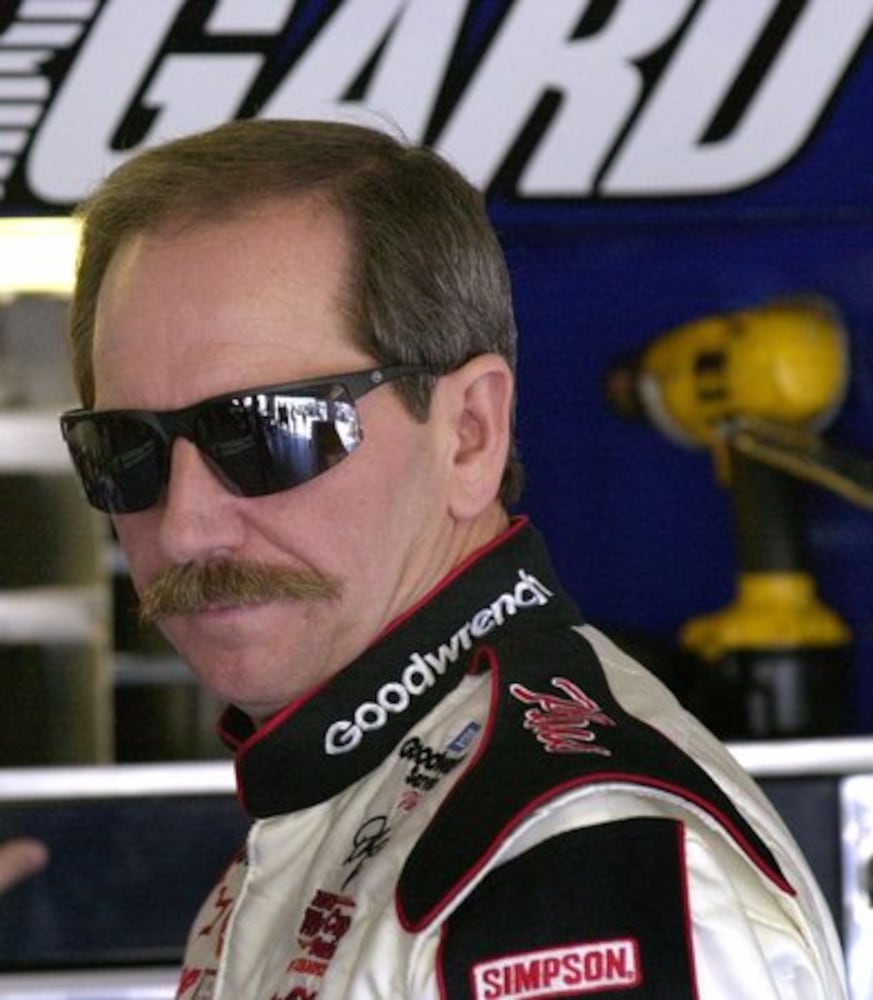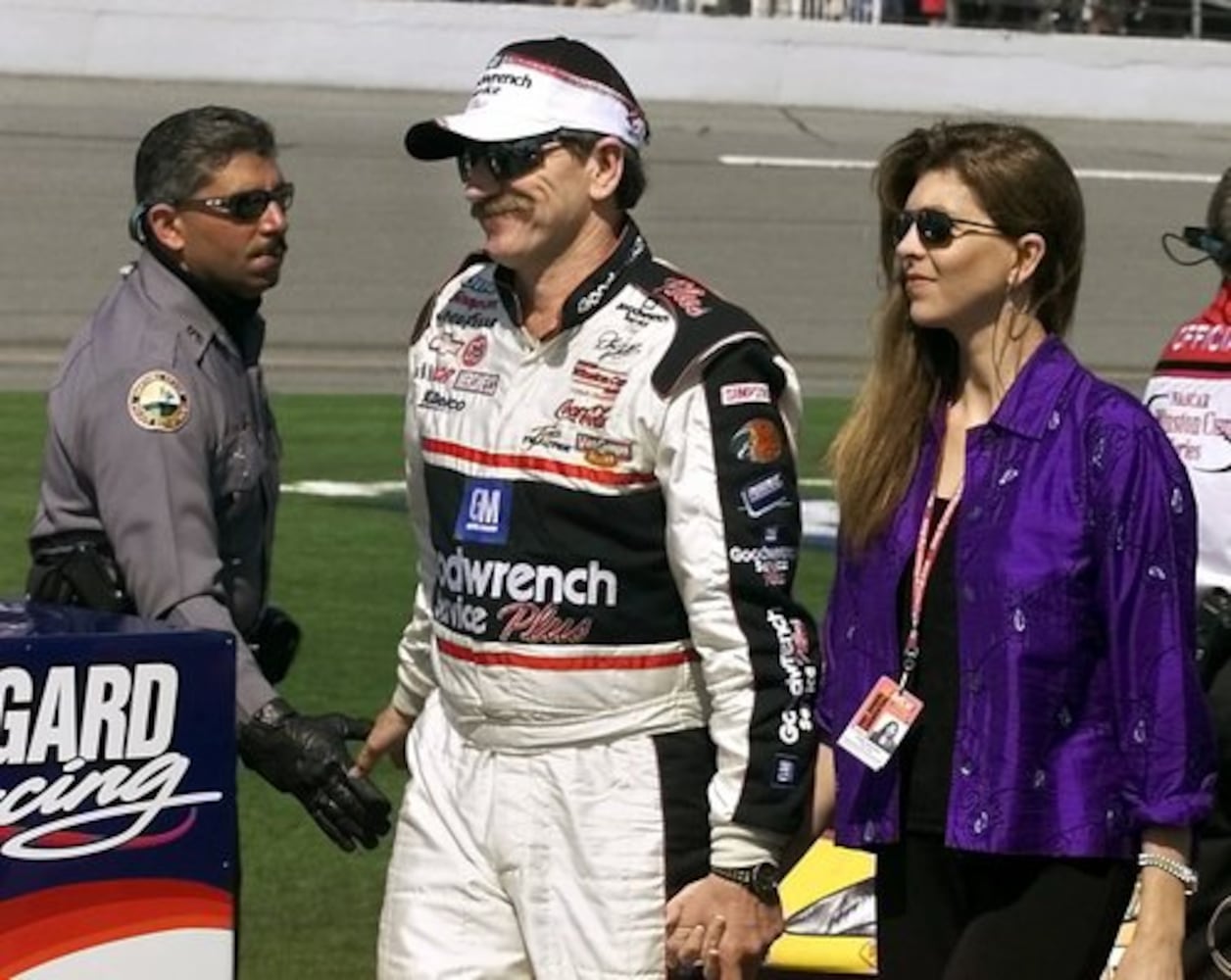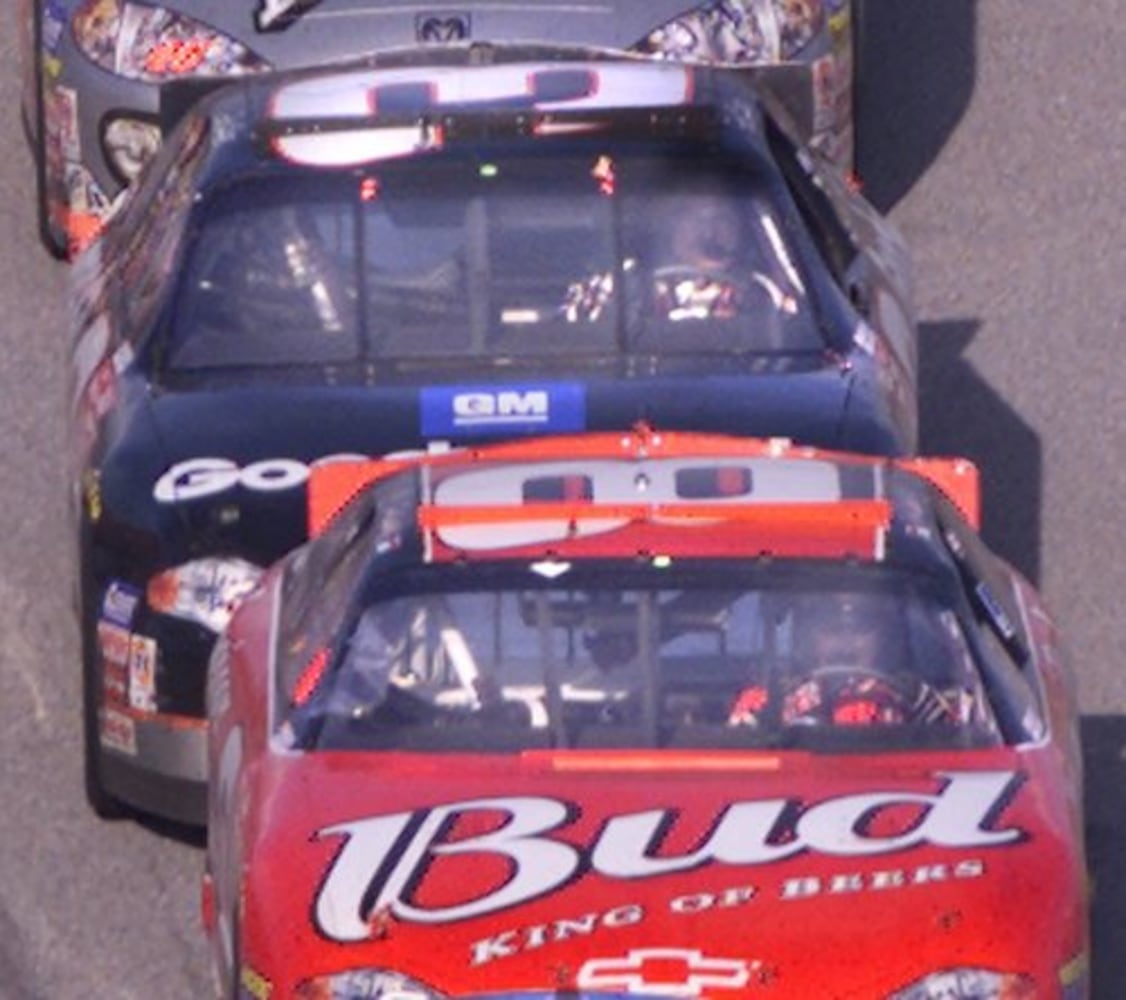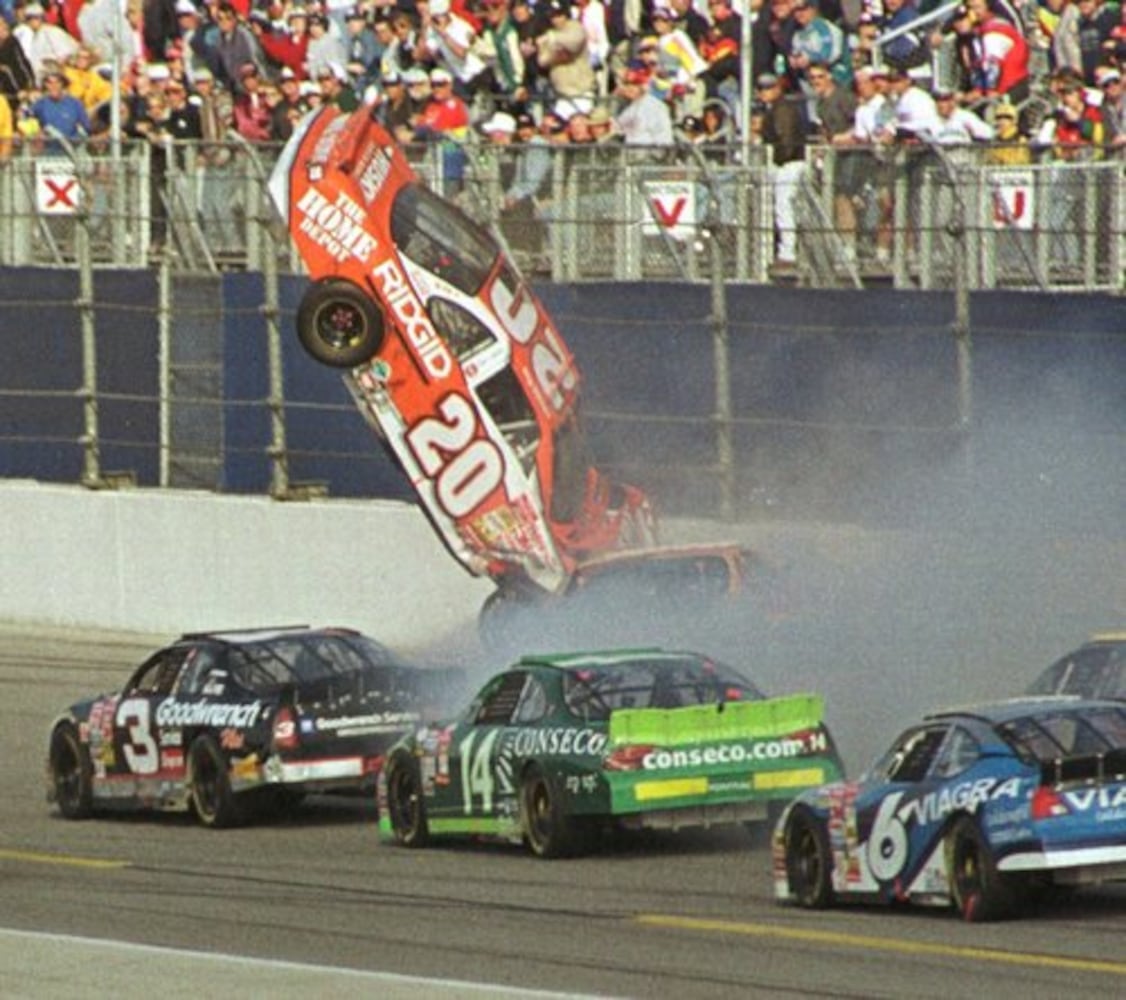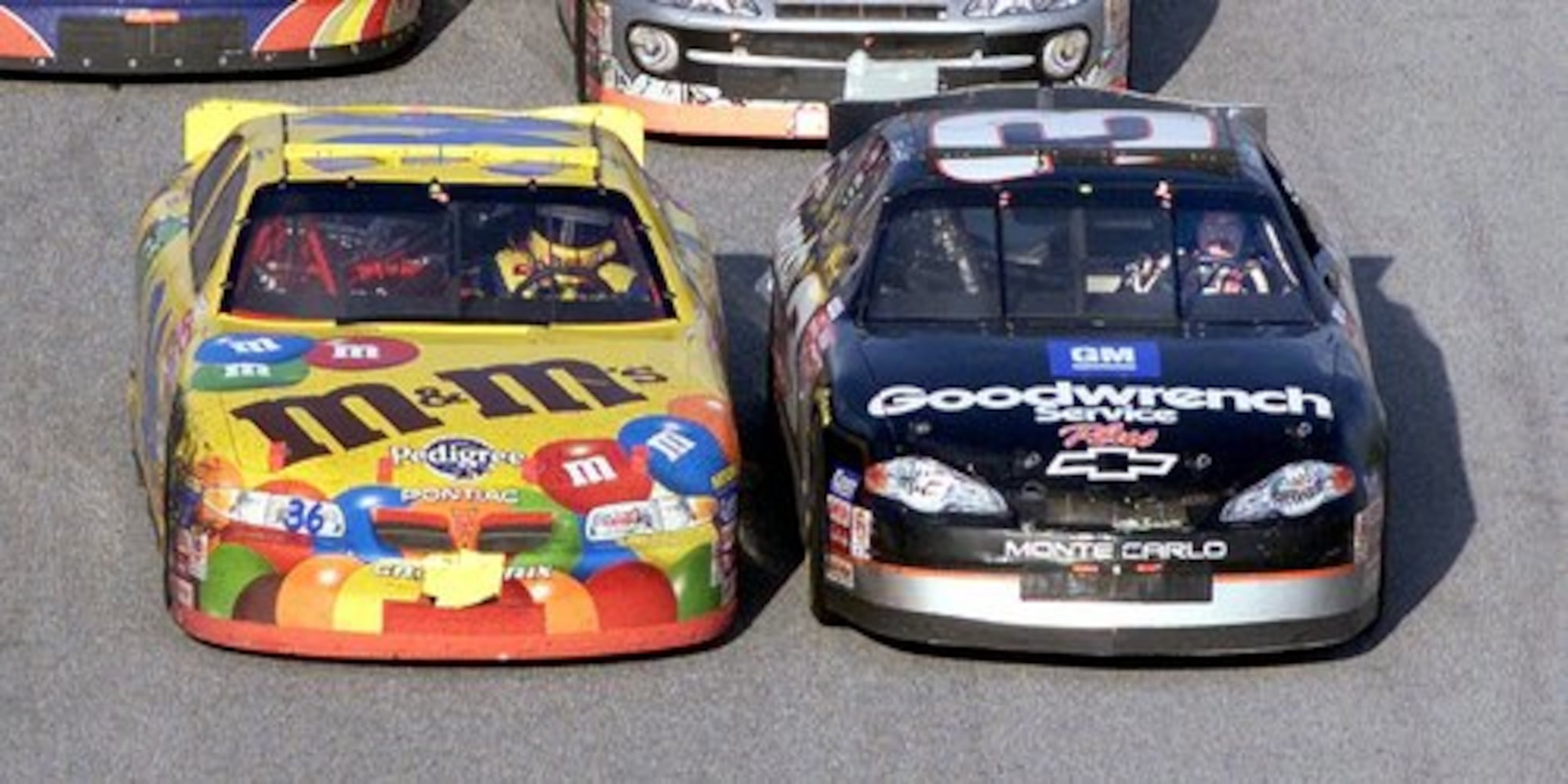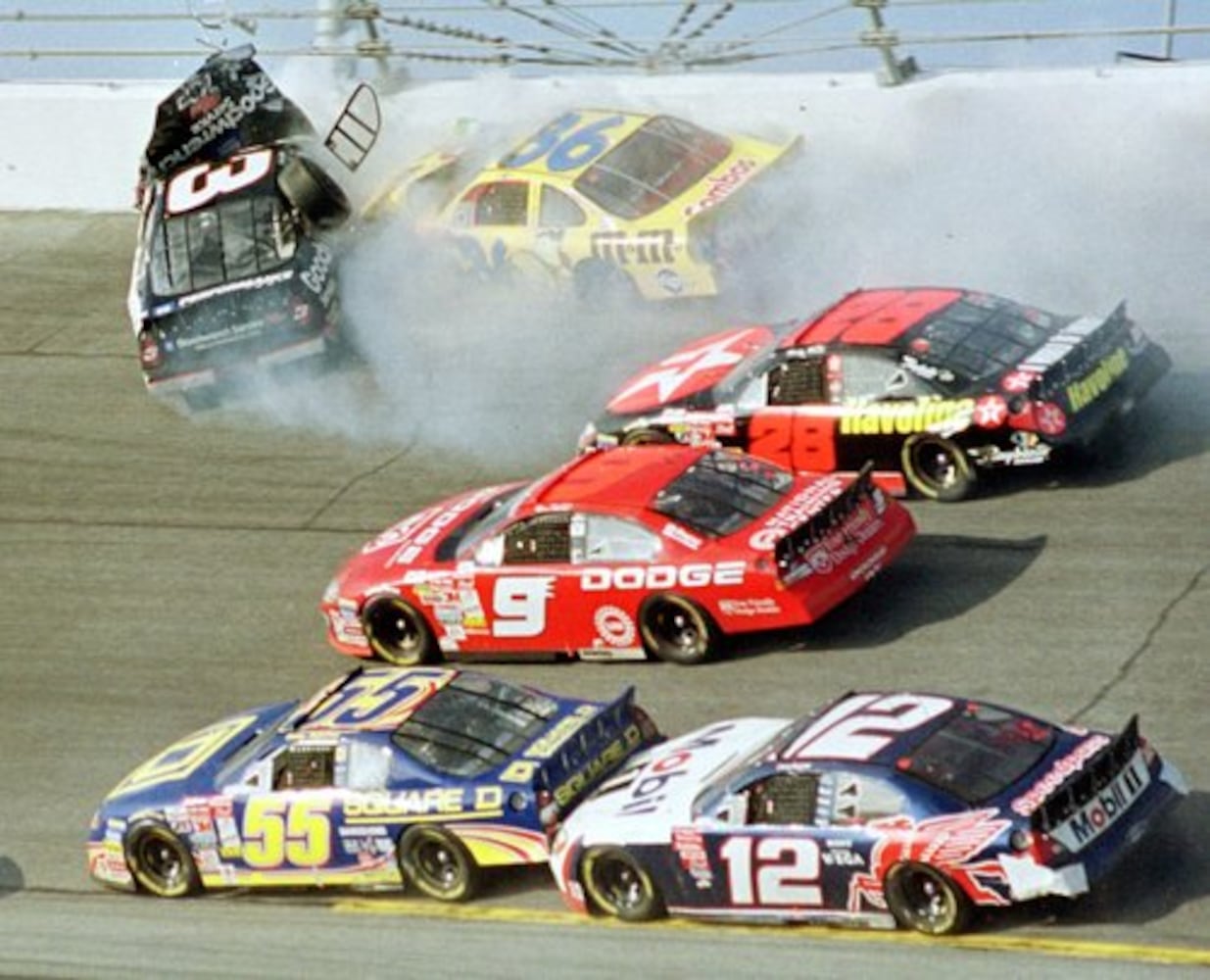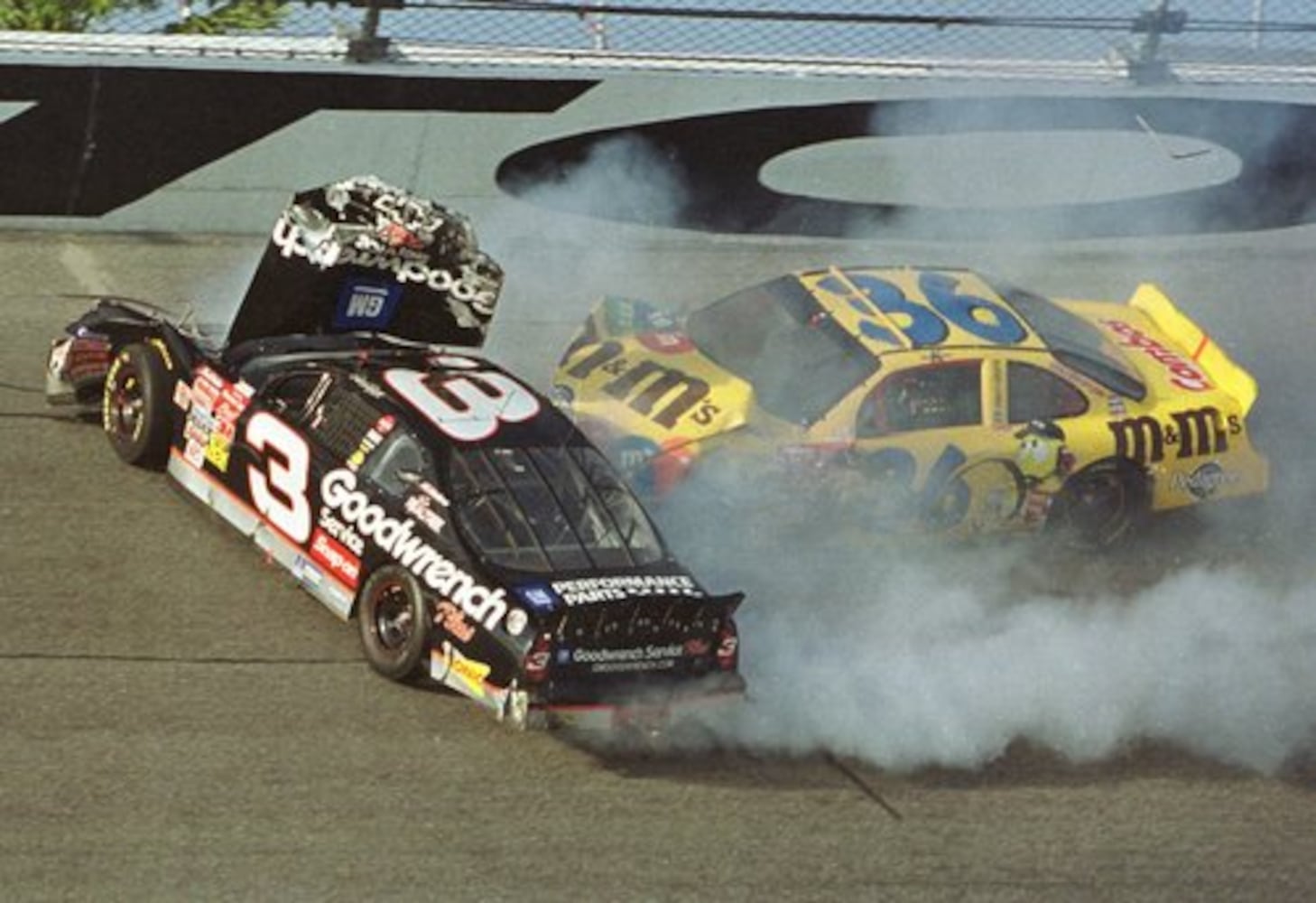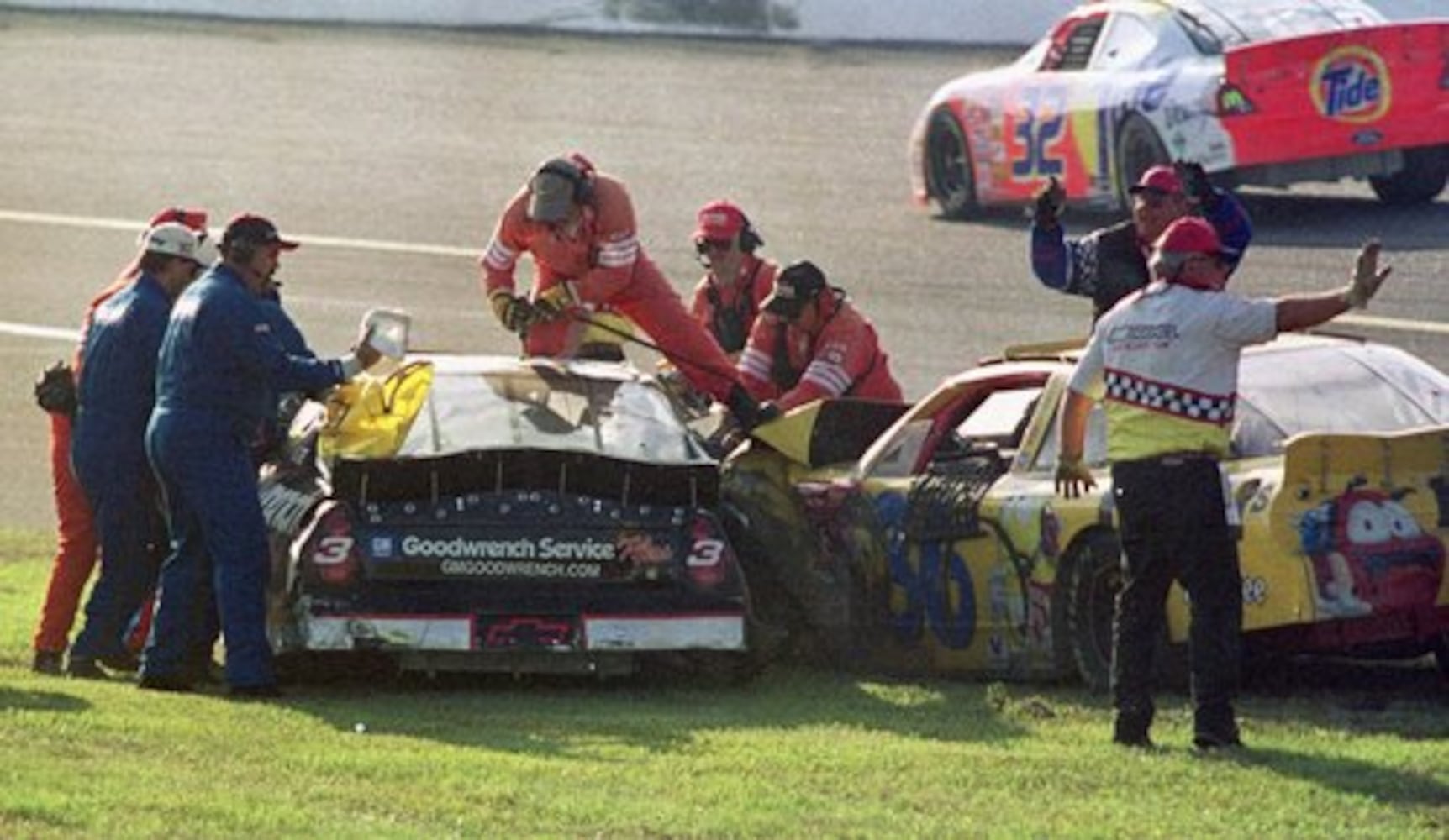Feb. 18, is an infamous anniversary in racing, and in 2021 it will mark the 20th year since the last fatal wreck in NASCAR. That the driver was the grittiest, hardest-charging, quintessential, most discussed and cussed wheel man that we’ll ever know makes the date indelible.
Twenty years ago Dale Earnhardt hit the wall in his sport’s Super Bowl, the Daytona 500. In this world, time is the only thing faster than Earnhardt. Impossible that it has been so long since he crashed on the last turn of the last lap of the big race — oh, so close to making it safely home. And just like that we’d never again see that mustachioed smirk, the one bearing the unspoken message “I can drive past you or through you, son, your choice.”
Twenty years later, as a field of Earnhardt’s heirs prepares to run the same famous race that killed him, we are still measuring the man’s legacy.
Credit: AP
Credit: AP
As driver Kurt Busch has attested, “There will be no one else like him.” His introduction to Earnhardt was that same 2001 Daytona 500, when earlier in the race he passed the rookie but not before flashing him a one-finger salute. “What did I do? I’m just trying to mind my own business,” Busch thought at the time. Just like that, Earnhardt was in another driver’s head, where he haunted so many.
The sport today is vastly changed from the one the seven-time Cup champion Earnhardt ruled. Not all for the better, certainly. No one has come along since Earnhardt to rouse the passions of an oft stagnant fan base like him. The closest has been a blood relative, Dale Jr.
Some things just had to change, like the insult that is the Confederate flag waving on the infield. This new season will see some new, encouraging hues in car ownership, from Michael Jordan to entertainer Pitbull. This sport must reach out from its core to survive, and if that means leaving behind those who refuse to evolve, then, so be it. Dinosaurs go extinct.
On balance, I don’t pretend to know what Dale Sr. would make of his sport today. But I’d sure love to hear his opinions, even if he grew to be an old grouse like most of the rest of us.
Kevin Harvick took over Earnhardt’s car after the fatal crash and for the longest time struggled to escape that long, dark shadow. But as time passed and his rides and sponsorship and ownership changed, Harvick pounded out his own identity.
“It made things more comfortable for the fact you were living on your success and it wasn’t something that was given to you. It wasn’t a position you didn’t deserve; it was a position you earned,” Harvick said last week in the run-up to the 500. It has worked out better than fair for him. With the retirement of Jimmie Johnson, Harvick is NASCAR’s winningest active driver (58 race wins, a career-high nine last year at the age of 45).
Credit: AP
Credit: AP
Harvick’s also the first source to go to in order to reference Earnhardt’s lasting influence on racing. “He changed so many things about our sport in so many different ways,” he said.
Earnhardt was heavily influential in life. He showed the potential power of the driver workforce. “First off,” Harvick said, “Dale had a great relationship with NASCAR and could move the needle when things needed to be moved from a competitor’s standpoint like no other driver has been able to do ever.”
His soiled blue-collar persona belied a keen business sense, that he and his family used to take control of souvenir sales, turning that into massive money-making proposition.
But it was in his death — a darn hard way to build a legacy — that Earnhardt is most felt around Daytona and every other track now.
Not that one life should be more valued than any other, but the truth is Earnhardt’s death cause a safety soul search that might not have been as intense had someone else been behind the wheel. As Harvick put it: “The impact that he has had after his death on the safety of the sport has been something far greater than would have happened with anybody else.”
Soon after his death, head and neck restraints were improved and became mandatory (a version of which Earnhardt stubbornly refused to wear). Tracks installed new safety barriers. Car design took a great leap forward, from the roll cage to aerodynamics.
“Look around the world at all the innovation and the things that have changed through the years it has been pretty dramatic from what we raced that particular day (Feb. 18, 2001),” Harvick said.
The science of it all is a bit overwhelming, but the result is evident: Not another Cup series driver has died in a race since. It’s difficult for a sport to boast that it is less lethal. The best it can do is just be quietly thankful and never stop working toward more improvements.
Last year’s Daytona 500 — a race that in general invites mayhem and chaos — was in a way a testimony to the post-Earnhardt safety push. Another last-lap crash sent Ryan Newman airborne in an explosion of sparks and fire and sheet metal.
“The reality is the start of my crash really was no different than the start of (Earnhardt’s) crash,” Newman recognizes now. But it played out so much more vividly violent than Earnhardt’s wreck. At first glance, you had to think no way somebody survives that. Yet Newman is here today, still in a firesuit, still tempting the limits of speed.
Another of NASCAR’s Super Bowls is on next Sunday. Twenty years after the sport’s greatest star of his generation died in the same race, they remain beneficiaries of the grimmer part of the Earnhardt legacy.
About the Author
The Latest
Featured
